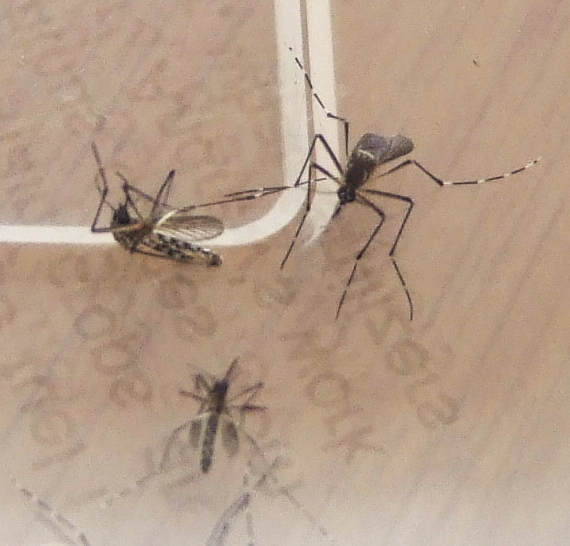Owing to the diseases they spread, including malaria, dengue and  yellow fever, mosquitoes rank as one of the world's deadliest inhabitants, killing millions of people per year.
yellow fever, mosquitoes rank as one of the world's deadliest inhabitants, killing millions of people per year.
But now scientists have developed a new weapon to blind these miniature flying vampires to the smell of their victims.
Female mosquitoes in search of a protein-rich blood meal hunt down dinner by tracking the trail of CO2 that humans (and other animals) exhale. The insects' antennae are equipped with exquisitely sensitive chemical recognition structures called receptors that fire off barrages of nerve impulses to the brain whenever molecules of the gas are encountered. The nerve activity increases in step with the carbon dioxide concentration, so mosquitoes literally follow their noses to find the source.
But Stephanie Lynn Turner and her colleagues at the University of California, Riverside, have discovered a common and safe molecule that can selectively block this response.
By recording the electrical activity from nerves in the insect's antennae whilst different molecules were presented, the researchers stumbled upon one - 2,3-butanedione - that triggered a huge burst of sustained activity from the CO2-sensing nerve cells.
But, unexpectedly, this activity was so intense that it effectively then desensitised the nerves to the smell of CO2. In a laboratory test in which a stream of CO2 was blown into a tube and mosquitoes were tracked flying upwind towards the source, the majority of insects treated previously with a brief exposure to 2,3-butanedione failed the task while those that did succeed took much longer than solvent-treated controls.
To confirm that the substance might be beneficial in a real-world setting, the team then erected inside a larger sealed structure two draughty huts reminiscent of the sort seen locally in one part of Kenya. Both huts contained CO2 sources in the form of a paraffin lamp and a mosquito trap, but one also contained a low-concentration source of 2,3-butanedione.
Mosquitoes were released into the main structure and then the numbers of mosquitoes trapped in each hut subsequently were totted up. The structure containing the 2,3-butanedione source trapped fewer than half the number of mosquitoes caught in the other hut.
This, say the scientists, suggests that this chemical could be used safely to reduce the attractiveness of humans to disease-spreading mosquitoes. However, since we also release other mosquito-attracting odours alongside CO2, how effective this will turn out to be in practice remains to be seen.










Comments
Add a comment